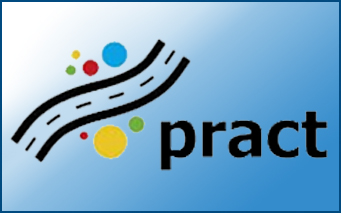
Road Traffic Accidents is a Pandemic comparable to Covid-19 Pandemic
Covid-19 is a major pandemic with large number of victims (165.000 fatalities at mid-April 2020), which can be compared to the road traffic accidents pandemic (1,35 million fatalities and 50 million injuries per year globally). However, road traffic accidents pandemic has never being seeing by the global population and the Governments as such a serious health problem and traffic safety measures have never being considered so seriously and massively by the Governments neither accepted by the people, as with Covid-19 pandemic measures.
The effectiveness of Covid-19 pandemic massive measures for controlling the spread of the disease can be an excellent example for the need of more serious and massive measures on traffic accidents pandemic. Whereas road infrastructure safety improvement and safer vehicles penetration require several years before witnessing major results, traffic behaviour can certainly be controlled and improved much faster, if social acceptance is raised and political will is strong and sincere. Especially, managing efficiently (by police enforcement and massive campaigns) the five major traffic killers (speeding, mobile-phone-use, drink-and-drive, seat belt and helmet non-use) can be proved highly beneficial with a great number of lives saved even at short term.
Road traffic safety is highly critical during the Covid-19 pandemic period
During the traffic lockdown due to the Covid-19 pandemic, the number of road traffic casualties decreased significantly, mainly due to the dramatic traffic decrease ). However, first studies demonstrated that less traffic led to higher speeds and in some cases more casualties per traffic.
It is highly important that the burden of the health system during the Covid-19 pandemic period must not be further overloaded by the traffic safety casualties and efficient traffic safety measures should be taken as soon as possible. Especially, during the critical period of gradual removal of the lockdown measures, traffic accidents must not be increased again. These new traffic safety measures must be included in the Covid-19 measures package for the period after the lockdown. Focus should be given to the major traffic killers (speeding being the most important) and to measures bringing results quickly. For example, these measures could concern:
- New speed limits applying to all roads horizontally (with important benefits also for the environment):
- 30 km/h in urban areas (50 km/h in major urban axes)
- 50 km/h at rural roads
- 80 km/h at major interurban roads
- 100 km/h on motorways
- Speeding enforcement should be massively implemented through cameras (always on) and fines massive processing should be efficiently upgraded if necessary with new legislation urgently put in place.
- Intensification of enforcement of mobile-phone use and non-use of seat belts and helmets, eventually with any other Covid-19 related traffic controls.
- Implementation of massive campaigns (within those for the Covid-19) raising public awareness on speeding and the other major traffic accidents factors.
It would be ideal for the global public health, if these measures intensification should remain also after the Covid-19 crisis with tremendous benefits for traffic safety.
We should stop going blind on road traffic safety policies – we need appropriate data
Pandemic data proved being highly critical in early prognosis and mitigation during the different phases of the Covid-19 crisis. The contribution of the international scientific pandemics community proved catalytic in analyzing quickly large sets of data in time-series, international comparisons and measures effectiveness, providing decision makers strong scientific evidence for the necessary mitigation measures. Appropriate data analysis remains a critical pillar for containing the Covid-19 crisis.
On the contrary, the road traffic accidents pandemic lacks fundamental data and corresponding analyses to support the necessary traffic safety decisions. Crash data are fully unreliable in more than half of the countries in the world (including most Low and Middle Income Countries and several Emerging Economies). Traffic data necessary to combine with crash data in order to judge the size of the phenomenon are also blatantly missing. And most importantly, reliable data and performance indicators on key traffic accident factors, like speeding, mobile-phone use, drinking-and-driving, are simply not available (with exception in very few developed countries) and any evaluation of traffic safety measures effectiveness will always be largely piecemeal and with limited transferability in other places in the world. Successful technological solutions raised during the Covid-19 crisis can easily be also exploited for the necessary traffic safety data collection and analysis.
In short, today in road safety we work mostly in blind, as we have very little knowledge for the size and the root causes of the traffic accidents pandemic and consequently no appropriate policies, programmes and measures can be designed and implemented. Both the Authorities and the road users (drivers, passengers, pedestrians) underestimate largely the road traffic risk and the role of speed, of distraction, of alcohol, of fatigue, with major consequence that today road traffic safety measures are largely under-designed and even less accepted by the population.
In conclusion
Covid-19 pandemic is a great opportunity for more serious work for the road accidents pandemic. Serious work, adequate effort and budgets, major public acceptance proved bringing good results which nobody would thought could be possible before the Covid-19 crisis. Let’s recognize that traffic accidents are also a global pandemic and start devoting the effort, resources, budget and data deserved for such a major global health problem.
We need safer road traffic and no accidents during and after the Covid-19 pandemic and perhaps the Covid-19 crisis can be the trigger also for a new and serious behaviour of the Authorities and the citizens for safer roads for all, everywhere in the world.














































































































































































